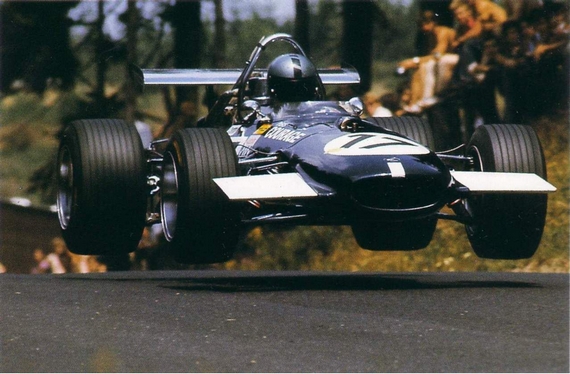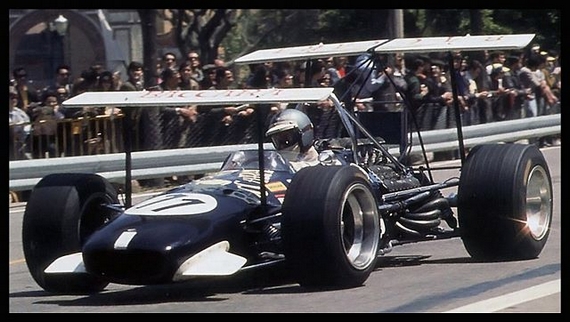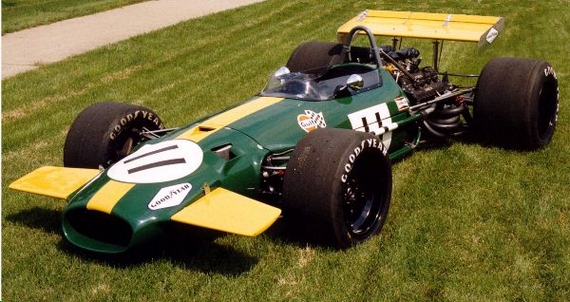The headline to this story has been attributed again and again to Ron Tauranac, designer of early Brabham Formula 1 cars. He may or may not have spoken those exact words, but his actions certainly supported that sentiment. Ron Tauranac, you see, was the last designer to field a tube-frame Formula 1 race car.
Rules for the 1970 season made it clear that a tube frame chassis would not comply with the new bag tank requirements. By 1969 all other constructors had moved to a monocoque design – even Ferrari – leaving Brabham alone running the welded, rather than folded and riveted, chassis.
Brabham updated its year-old BT26 model – designed around the larger Repco engine – to accommodate the smaller, more powerful and reliable Ford Cosworth DFV for 1969. In what appears to have been a move to cut expenses in a transitional season, the engines were installed within the frame rails as the Repco had been – obviating a key advantage of the fully-stressed Cosworth V-8. And instead of shortening the wheelbase of the BT29, Tauranac simply installed the engine further back in the chassis. Not the sort of compromises one would expect to have been made by a potential championship contender.
While one might expect to see a sophisticated mix of small and medium tubes creating a highly intricate chassis like of that of a contemporary Porsche sports prototype racecar, the reality is that the BT26A frame looks more like a scaled-up Formula Ford design than anything else. Low on style points, high on engineering simplicity.
Despite being a year-old chassis design, conceived around a different, larger engine, utilizing a technology felt by many to be completely out-of-date, the BT26A performed extraordinarily well in 1969. Jack Brabham himself sat on pole for the first race of the season at Kyalami, though he DNF’d. In Spain Jacky Ickx finished sixth to pick up the first points for Brabham for the season. At Monaco privateer Piers Courage drove an updated 1968 BT26 to second, while both Brabham and Ickx DNF’d. In Holland both Brabhams again finished in the points, while Ickx took third in France, kicking off a hot streak for the Belgian driver. A second at Silverstone, and pole, race fastest lap, and a win at the Nurburgring moved Ickx into second behind Stewart in the championship. A one-two for Brabham at the Canadian GP was a highlight for the team that season, with Ickx again capturing the pole and setting the race fastest lap. Courage in his updated BT26 was again on the podium at Watkins Glen, with Brabham fifth and Ickx with a DNF.
At the final race in Mexico, which was also the final race of tube-frame F1 car eligibility, Jack himself took pole position, Ickx set fastest lap, and Ickx and Brabham finished second and third in that order. Unfortunately for Ickx, Stewart’s early season form, winning five of six races, made catching the Scot nearly impossible; the Belgian driver forced to settle for second in the Drivers Championship.
Brabham the team was also runner-up in the Constructors Championship, remarkable for a chassis design that was widely assumed to be outdated. The team finished second only to Jackie Stewart and the very sophisticated Matra, which utilized a complicated, aircraft-type construction method. In an ironic twist, neither the aerospace-derived Matra nor the simple Brabham could be fitted with bag tanks, so the two top cars in 1969 were both ineligible to contest World Championship F1 races in 1970.
“The fastest thing about the monocoque Lotus is Jimmy Clark”: Ron Tauranac is a post from Motorsport Retro, bringing you classic motorsport, cars, motorcycles and gear every day.



